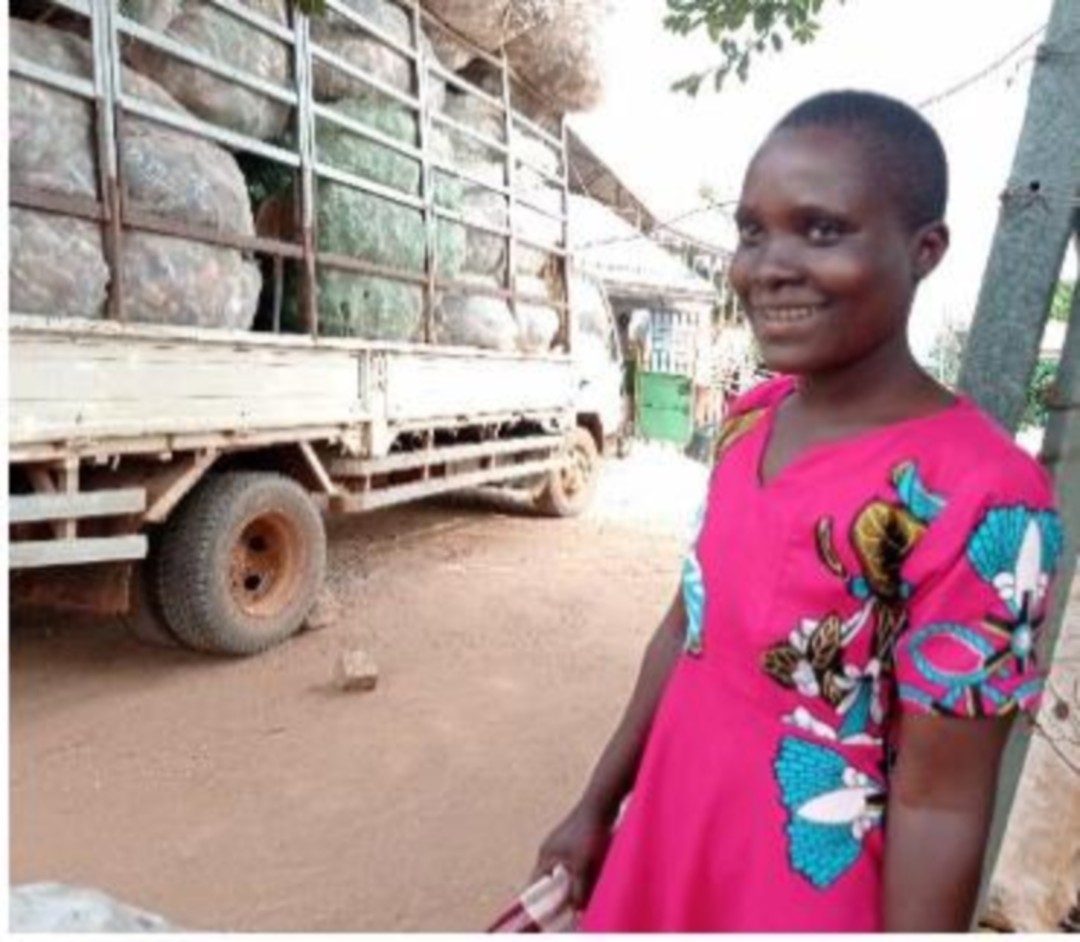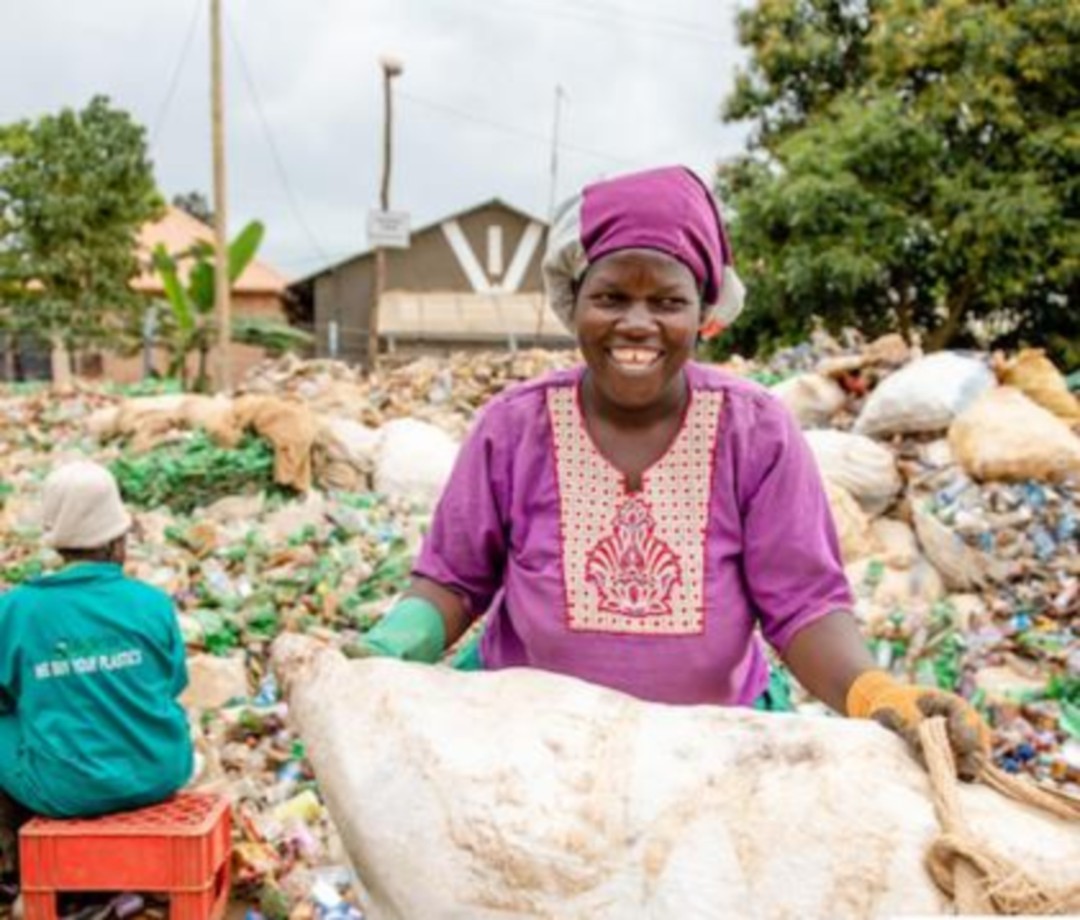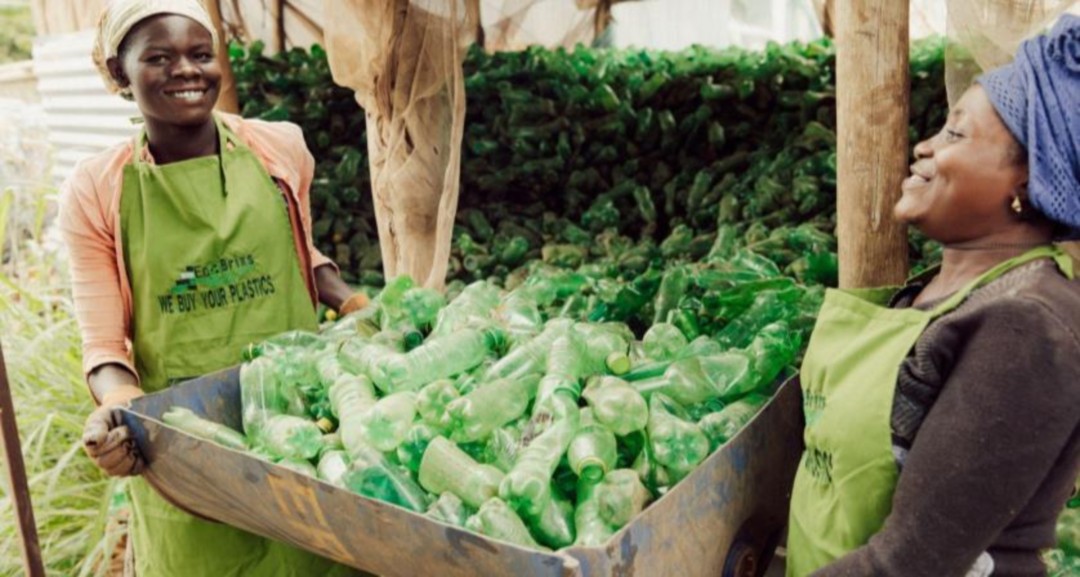Creating sustainable livelihoods through the circular economy
The project aims to enable 1,300 marginalized community members (35%women, 60% youth and 10% people with a disability) to earn flexible supplementary income while removing 1,500 tons of plastic from the shores and water of Lake Victoria. More specifically it will create 1,300 new sustainable green jobs created for marginalised community members (820 youth, 400 women, 80 people living with a disability); 150 jobs are full- time and 1,150 are part-time employment; 10 new full-time jobs created at the Eco Brixs recycling facility in Masaka; 12 new full-time jobs created at the buy-back centre and 5 recycling hubs in the Kalangala region; 1,500 tonnes of plastic are removed from the environment and recycled into a range of eco-products; Improved community awareness on clean environments and the reduction of plastic that is dumped and burned around Kalangala region of Lake Victoria; In the long-term, it is hoped that fish will replenish the surrounding waters thanks to the environmental clean-up, restoring jobs for the fishing industry. As a social enterprise in Uganda Eco Brixs’ end goal is to self-fund and be sustainable through the circular economy. Eco Brixs is a leader in recycling a range of eco-products regionally with plans to be more national over the next 3 years. Within 5 years Eco Brixs anticipates no longer being dependent on any grant funding (within Uganda) and instead cover all operational costs from trade profit.
Founded in 2017, Eco Brixs is a British NGO. It aims to recycle plastic waste whilst simultaneously creating job opportunities for marginalised people in Uganda.



Uganda
Population
42.9 million (2017)
Per Capita Income
USD 600/year (2017)
Poverty rate *
21% (2016)
Literacy rate
70% (2016)
Human Development Index
162nd out of 189 countries (2018)
Uganda’s economy has continued to post strong growth, by many developing country standards. It nevertheless remains a very poor country and far from the middle-income status it aspires to. Although the poverty rate has greatly declined from 39% in 2002 to 19% in 2012, the strong population growth has meant that the absolute number of poor people has remained the same. One in three children has no food to eat during the school day and 27% of children under five are stunted. Agriculture accounts for 25% of the country’s GDP and employs 77% of the adult population. However, the productivity of smallholder farmers remains low due to lack of access to services such as credit and insurance and reliance on traditional farming methods.
Sources: World Food Program, UNICEF, World Bank, 2016 Human Development Report, Human Development Indices and Indicators (2018 Statistical Update)
*The percentage of the population living below the national poverty line.